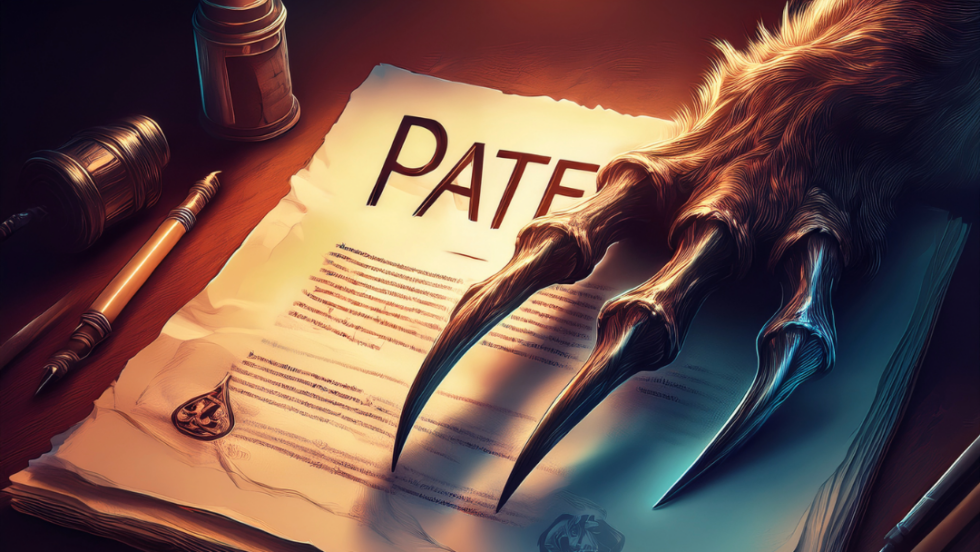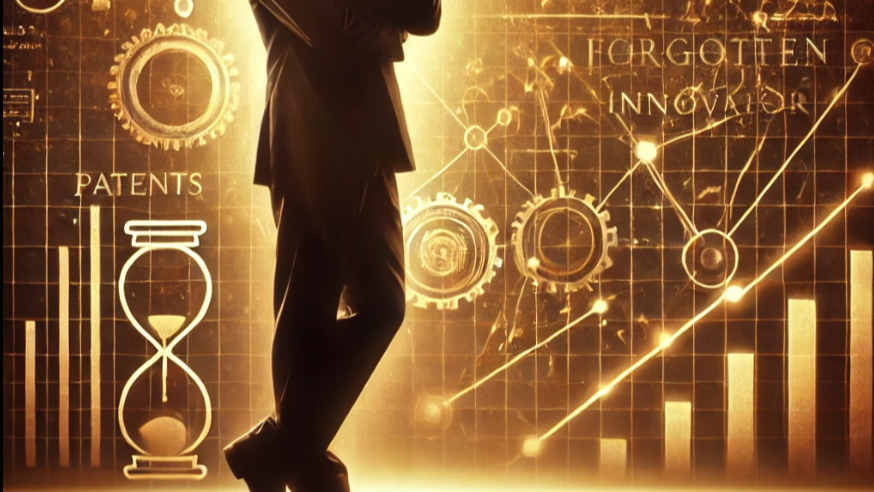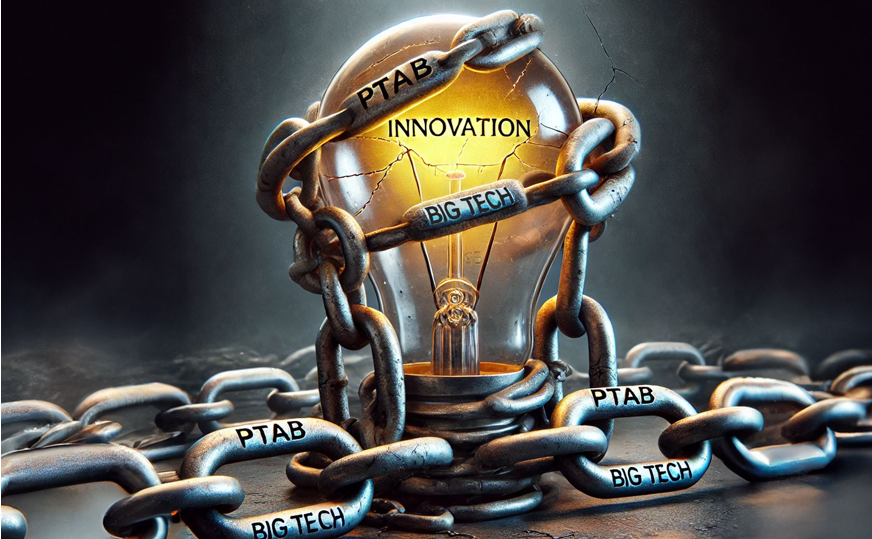
In 2007, the United States led the world in 60 out of 64 technologies critical to our economic and national security. However, warning signs that a shift had occurred emerged in 2018 when it was reported that China accounted for 48% of global Artificial Intelligence (AI) startup funding in 2017, surpassing the U.S., which held only 38%. By March 2023, China had taken the lead in 37 critical technologies. By August 2024, just eighteen months later, that number had surged to 57.
Of the many things contributing to the loss of U.S. technological leadership to China, a concealed weakness has long festered, one that foreign adversaries, particularly China, have learned to exploit.
While American inventors labor over prototypes and spend years refining their inventions, the U.S. Patent and Trademark Office (USPTO) publishes their patent applications before the patent is issued. This exposes unprotected breakthrough technologies not only to U.S. competitors but also to opportunistic foreign actors.
For large corporations with deep pockets, supply and distribution networks, and engineering and manufacturing resources, this exposure can be managed. But for the backbone of American innovation, small inventors and tech startups lacking those resources, it’s a death sentence.
Patent Transparency: A Double-Edged Sword
Under current U.S. law, most patent applications are automatically published 18 months after their earliest filing date. The rationale is to spur innovation through the dissemination of knowledge. But in practice, it hands blueprints of cutting-edge technologies to the world’s most aggressive intellectual property thieves.
China has built a strategy around this window of unprotected IP. State-sponsored programs such as the Thousand Talents Plan and broader industrial initiatives like Made in China 2025 are not just focused on fostering homegrown innovation; they are about identifying and taking foreign breakthroughs.
U.S. patent application publications provide a detailed blueprint readily available to anyone seeking to replicate cutting-edge innovations. With little fear of consequence, Chinese firms analyze pending applications, identify promising innovations, replicate them, and bring products to market, often years before the original inventor secures funding, partners, or even a granted patent. Then they use their ill-gotten head start and massive resources to flood the market.
Small Inventors Don’t Stand a Chance
Large companies can minimize this problem with international filings, defensive publication strategies, or litigation threats. But for the average American entrepreneur, garage inventor, or tech startup, no options are available. International patent filings can cost hundreds of thousands of dollars, and litigating infringement in foreign courts can cost millions.
When a Chinese manufacturer beats an American inventor to the global market using that very inventor’s disclosed, pending patent application, the damage is irreparable. By the time a U.S. patent is issued (if it’s ever issued), the market is already taken by a huge multinational. Investors and partners move on to something else.
This isn’t theoretical. It’s happening right now. Take a walk through any electronics expo, and you’ll find dozens of products that originated from ideas funded, developed, and tested by American inventors that are now made in China and shipped back to the U.S. at scale.
The Bigger Picture: Innovation Drain and National Security
The cost is not just economic; it’s strategic, and it harms U.S. national security. In 2024, an Australian think tank revealed that China now leads in 57 of 64 critical technology sectors. Much of that success can be traced to China’s systematic theft of American pending patent applications right off the USPTO website.
Even the U.S. National Counterintelligence and Security Center has acknowledged that Chinese actors routinely exploit open-source innovation, including U.S. patent filings. When a pending application reveals a new battery design or software algorithm, it doesn’t take a spy to steal it. A motivated engineer reading the USPTO website is all that is required.
A Broken Bargain
The social contract behind our patent system is simple: disclose your invention, and in exchange, you get exclusive rights to it for a limited time. But that bargain is broken the moment the unprotected patent application is published. Worse, U.S. economic and national security is harmed because American technology is quickly stolen by China’s multinational corporations.
Why are we giving foreign adversaries a front-row seat to our nation’s most important emerging technologies?
The Solution: Reform with the Small Inventor in Mind
U.S. patent applications should not be published until the patent is issued and the invention is protected. This would give American inventors a fighting chance to secure a toehold in the market before their inventions are exposed to the world.
The USPTO, in coordination with the Department of Commerce and intelligence agencies, must monitor how U.S. patent publications are being exploited. When patterns of misuse are detected, there should be real consequences, including trade penalties or import restrictions.
Conclusion: Innovation Should Reward the Inventor, Not the Imposter
America is blessed with a deep culture of innovation, but that culture is in danger. When the patent system disproportionately harms those it was built to protect, reform isn’t optional; it’s essential. China’s technological rise is not just a result of domestic effort; it’s built in no small part on the innovations of American minds, prematurely exposed by a system that needs fixing.
We must do better for the lone inventors, startups, and the national interest. Protecting innovation doesn’t end at the patent grant. It begins with ensuring the right people can bring their ideas to life without watching them being stolen, mass-produced abroad, and sold back to us.
Paul Morinville is Founder and Executive Director of SPARK Innovation. SPARK Innovation strives to create an policy environment where the conception, protection, and commercialization of technologies critical to our economic and national security prosper thereby enabling the United States to take back the global technological lead from China. Paul is an inventor and has been an executive at multiple technology startups including computer hardware, enterprise middleware, video compression software, artificial intelligence, and medical devices, and has licensed patents in the U.S. and China.







Every day brings breaking, sensational news. Old erratic King Midas, with his magic, turns everything he touches into a disaster. It is hard to compete for people’s attention to the political and economic disaster unfolding before our eyes. Yet we must try. One thought comes to me when I am reading Paul’s articles. Shouldn’t we put together and publish a book, guide for starting up inventors? To teach them about reality and eventually help them seek alternative routes. From what I see, there are plenty of inexperienced (With PTAB etc., ) joining the ranks of hope”fools”. They do not need another bad experience in their lives. They require help and guidance to use their energy wisely. I am writing this because this blog is addressed to small group people already touched by the wise outcomes of Supreme Court rulings and wider public is still under impression that e-bay never happened. Whenever I open my mouth to inform about real details of US “American dream”: for inventors, people are telling me they are feeling deceived. The subject of this blog is actually not about “inventor rights” but much wider, about loss of our civil rights and liberties.